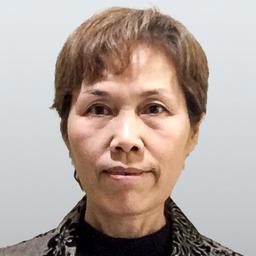At the end of 2020, the CCP claimed that all 832 poor counties in China have been removed from the poverty list and the goal of poverty eradication was achieved.

Pushing farmers to install solar panels in remote areas has been described as “China’s pioneering precision poverty alleviation program,” according to a report published by Chinese news portal National Business Daily (NBD) in October last year.
Solar power, also called photovoltaics (PV, in short), generates 18 billion yuan (about $2.78 billion) in annual revenue, while benefiting 4.15 million poor households, according to Zhang Jianhua, director of Chinese National Energy Administration.
“A total of 26.36 million kilowatts [kW] of photovoltaic power stations have been built nationwide, benefiting nearly 60,000 poor villages and 4.15 million poor households, generating an annual income of about 18 billion yuan from power generation,” Zhang said at a press conference on Oct. 19, 2020.
However, the actual situation is far different.
PV Poverty Alleviation Project Is a ‘Scam’
The CCP’s media outlets call the photovoltaic poverty alleviation project the “sunshine income” policy, claiming that once the solar panels are installed, farmers “can just sit back while generating income from the solar panels,” which will not affect the growth of crops.The theory is that a farmer installs a 5kW PV system on the roof of his house and in his field, which can generate 7,300 kilowatt hours (kWh) of electricity a year. With a subsidy of 0.42 yuan (about $0.065) per kWh from the government and a special subsidy of 0.98 yuan (about $0.15) maximum per kWh in rural areas, a farmer can make 10,220 yuan (about $1,579) a year, according to Chinese online media KK News. The investment will be earned back within five to seven years on average.
A social media group called “Weiheng agricultural little bee” claimed that the PV poverty alleviation project is a “scam.”
According to an article posted by the group, titled, “Exposing the Rural Photovoltaic Solar Energy Scam,” farmers would need to invest approximately 40,000 yuan (about $6,221) for a 5kW PV system. “Coincidentally, there is a project of poverty alleviation that provides loans of under 100,000 yuan [about $15,546] to farmers exclusively, with no interest charged for [up to] three years.”
Other factors affecting a farmer’s solar energy yield include decreasing the price for power generated from the solar system, cancellation of state subsidies in three years, and lack of proper maintenance of the system which can significantly reduce power generating capacity. The article said that the lifespan of the system is much shorter than 25 years as advertised. It claimed that “after about 5 years, the equipment ages and the efficiency of power generation is greatly reduced.”
“In fact, this is a tactic that photovoltaic enterprises use to digest their excess capacity. As our government has long supported domestic PV enterprises, they have developed rapidly. These photovoltaic enterprises, with government subsidies and support, experienced extremely fast growth, causing a serious overcapacity,” the article said. “They take advantage of farmers who have little understanding of the high-tech industry, and fool them to invest in solar panels to help PV manufacturers solve the problem of overcapacity.”
The Theoretical Calculation Is Far From Reality

According to a Xinhua report published in October last year, some poor villages accepted the PV poverty alleviation project and took out large loans from banks to finance the project. However, due to various reasons such as quality problems and lack of maintenance, some of the solar power systems yielded far less income than expected from the beginning, while many others broke down in just a few years, with no one to fix the problems, and income decreased year by year.
This situation occurred in Xihu village in Jiangsu Province since it participated in the project in 2016. The PV project, which originally promised an annual income of 390,000 yuan (about $60,000), yielded an annual income of less than 100,000 yuan (about $15,000) after four years, which was not enough to repay the bank interest, according to Xinhua.
The contract between the PV company and the village promised to generate about 330,000 kWh of electricity annually. In reality, the average annual power generated for the first two years was only 200,000 kWh or 60 percent of the projected capacity. By the fourth year, the power generated in a year was less than 100,000 kWh, less than 30 percent of the projected capacity, according to sources quoted by the report.
The local officials were quoted by Xinhua as saying that Xihu village had a total annual income of a few tens of thousands of yuan before the PV project was launched. In order to be removed from the CCP’s poverty list, Xihu had to meet an annual income of 180,000 yuan (about $27,800) by the end of 2020. The local authorities had relied on the PV project to lift the whole village out of poverty. But what turned out, in the end, was the village mired in debt for over 2 million yuan ($309,000).
Many Countries Forced to Take Anti-dumping Measures Against China
Over the past decade or so, the CCP has used state subsidies and preferential lending policies to foster the development of China’s solar industry.According to Chinese news portal Sina, as of 2017, Chinese-made solar panels have accounted for 71 percent of the global market share. With prices 30 to 50 percent cheaper than Japanese solar panels, the Chinese products have squeezed Japan’s market share to 2 percent, while Japan used to be the largest provider of PV products.
The low price competition, or dumping, and expansion of the Chinese PV industry have triggered anti-dumping and anti-subsidy investigations in many countries and regions.





